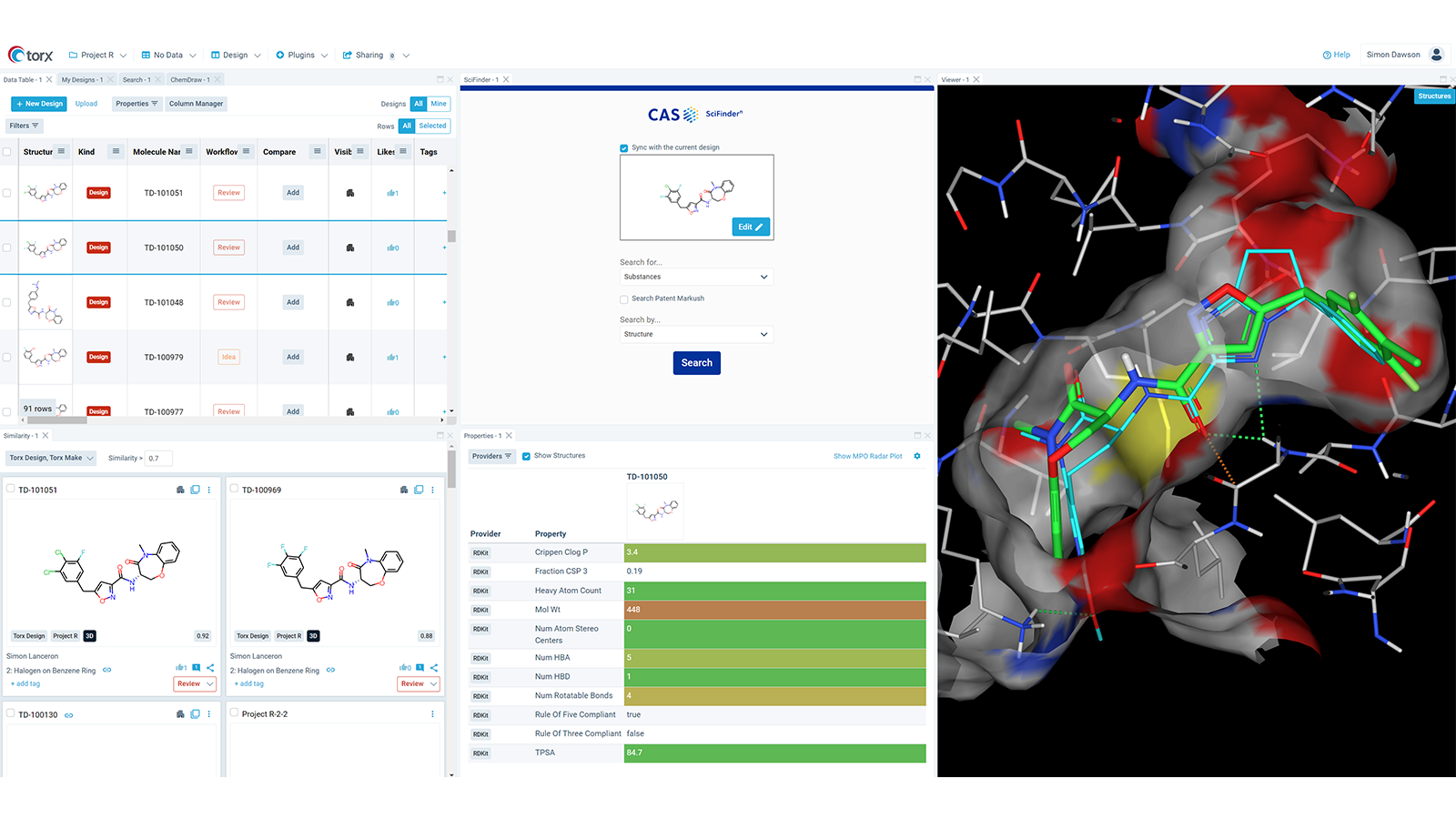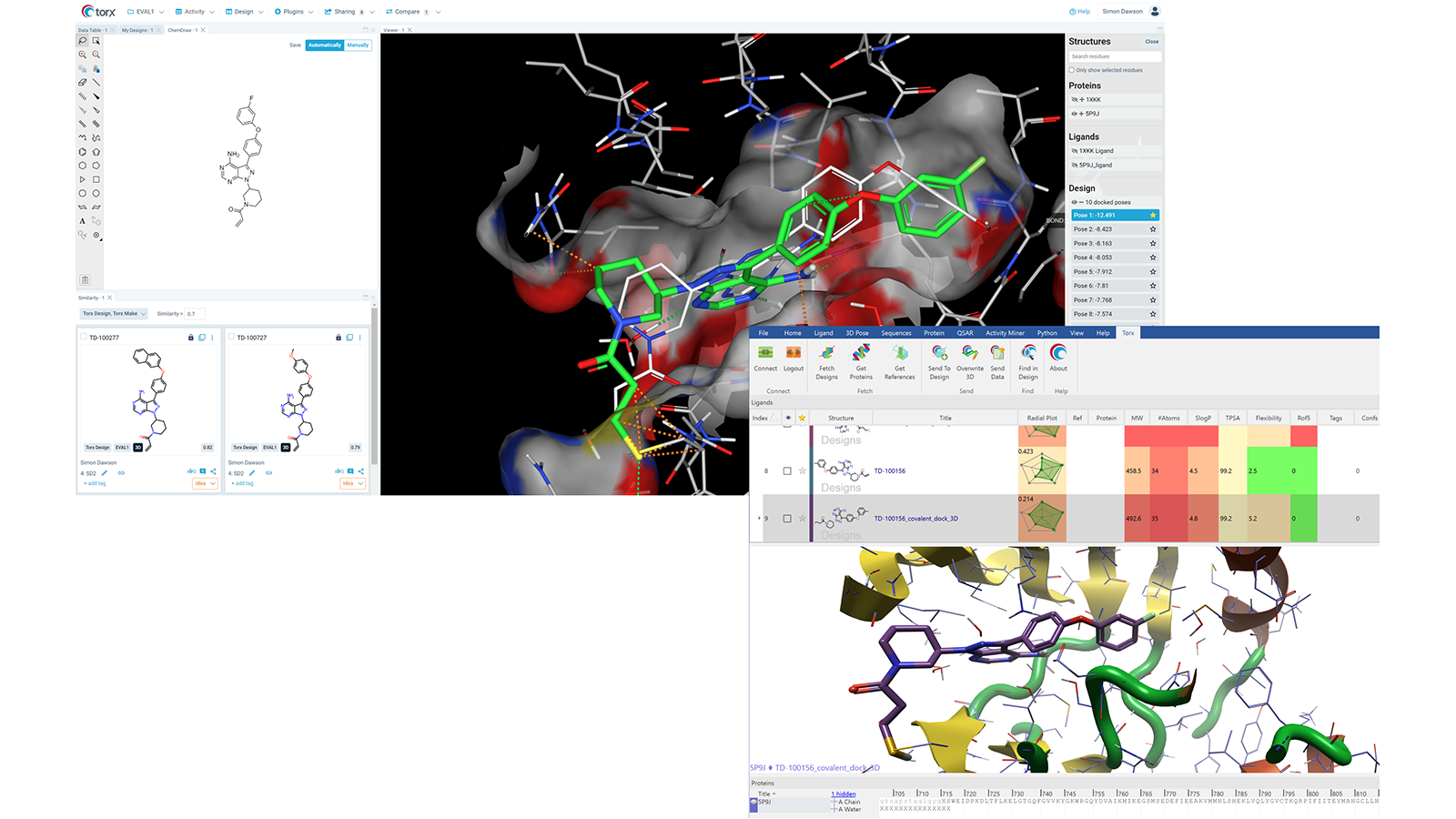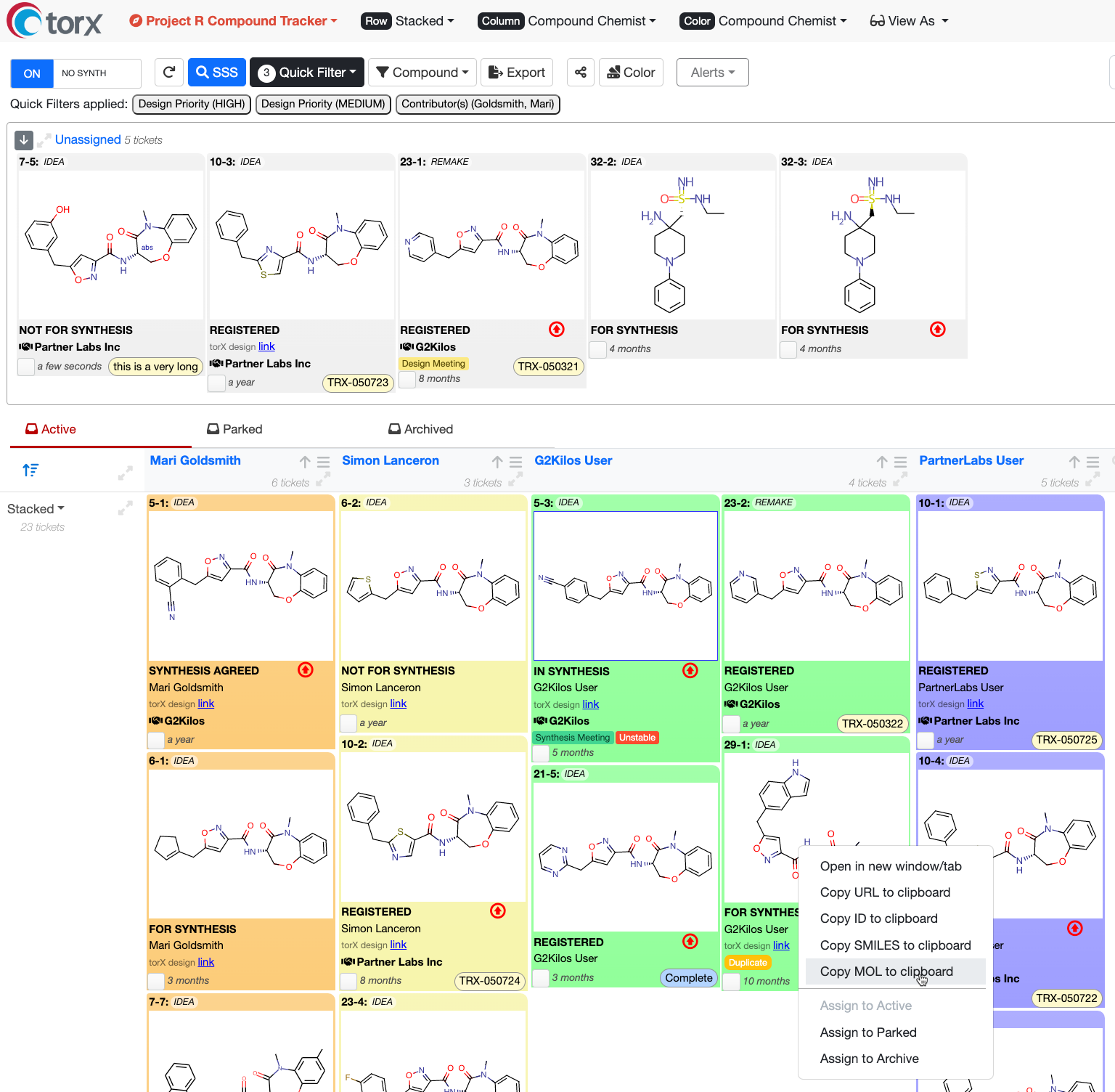A day in the life of a chemist: Discovery chemistry project continuity and wrap-up
The concluding chapter in our 'A day in the life of a chemist' series focuses on project continuity and wrap-up.
News
Collaboration is a key word at Torx® Software. We're passionate about enabling our customers to reach viable candidate compounds faster. Over the last year we have listened carefully to customer feedback and combined it with our deep understanding of the drug discovery process to develop the latest major release: Torx 2.0.
Today's drug discovery scientists have more information at their fingertips than ever before, and through artificial intelligence and machine learning methods, even more candidates to screen. This combination of factors means it's vitally important that chemists are able to efficiently make informed decisions about which compounds to take forward - not only based on predicted activity but also synthetic feasibility and patentability.
Following our recently announced collaboration with CAS (a division of the American Chemical Society), if you have a subscription to CAS SciFindern, you can now connect to it seamlessly from within Torx Design. This enables you to perform literature and patent reviews, uncover key insights, and understand synthetic feasibility using the CAS SciFindern advanced search, visualization, filtering, and analysis capabilities. Adding the dedicated plugin window into your design environment enables you to search and display the results in SciFindern alongside real-time physico-chemical, near-neighbor, and 3D-pose data, providing the information you need to make key decisions about drug candidates.
 Figure 1: Performing CAS SciFindern searches against designs from within Torx.
Figure 1: Performing CAS SciFindern searches against designs from within Torx.
While covalent drugs have been in use for approximately 100 years, over the last decade there has been an upturn in drug discovery efforts to identify new candidates, driven in part by recent successes with novel electrophilic warheads, reactive fragment screening, and the use of proteomics to verify selectivity. As such there is a growing need to effectively assess candidate covalent binders in silico to derive insights on their binding mode and affinity.
To support this, we have expanded our use of the LeadFinder algorithm in Torx to include covalent docking. Simply upload your target protein, select the nucleophilic residue and you'll be ready to start experiments. Once complete, you can compare compound docking results directly in the Torx interface in conjunction with physico-chemical properties and other key data points, or share seamlessly to Flare for further interpretation or elaboration, using our out-of-the-box integration.

Figure 2: Covalent docking in Torx and sharing results seamlessly to Flare.
Contract Research Organizations (CROs) are now considered trusted partners across the entire drug discovery process, and this trend is set to grow, with some sources estimating the drug discovery outsourcing market to reach $6.3 billion by 2030. With the increase in client-sponsored, CRO-led programs, CROs are also now more likely than ever before to be involved in the Design, Make and/or Test stages of the DMTA cycle.
Smooth, secure, and effective communication between CRO and client is vital to the success of each project. However, traditional methods of collaboration, such as submitting regular reports or holding meetings, can be time consuming to prepare for and typically rely on non-chemically aware tools such as static PowerPoint® slide decks, emails and/or document storage and sharing platforms such as SharePoint®.
Instead of preparing emails or reports, you can publish molecules in Torx Design to collaborators for asynchronous review and feedback, then progress agreed candidates into the synthesis phase of work. We have recently delivered enhancements to the workflow interface to enable greater flexibility in moving compounds backwards and forwards through the various workflow states and improved the link to Torx Make to make it easier to navigate to a selected compound in Torx Design.
As molecules move into Torx Make, they can be assigned to both internal and external collaborators, and there is now the ability to easily schedule unassigned resources, driving greater efficiency. You can also update compound tickets in bulk via a CSV upload, enabling synthetic chemists (both internal and CROs) and the design team to easily keep track of synthetic progress.
For synchronous communication, many of our customers now use the Torx user interface as a dynamic and chemically aware meeting agenda, removing the need to prepare 'throwaway' collateral such as slide decks. Based on customer feedback, we have made significant improvements to both the Torx Design data table and the Torx Make Kanban board including enhancing the filtering behavior, so that you can rapidly adjust the interface to focus on a particular subset of compounds for discussion and real-time decision making.
Once synthesized, you can seamlessly submit molecules to either internal or external services for testing and the new Torx Test Orchestrator enables you to quickly visualize and track your test requests at the project, hypothesis, and compound level.

Figure 3: Using Quick filters in Torx Make.
As data associated with each molecule accrues throughout the Design Make Test Analyze (DMTA) cycle, it can progressively become more difficult to consolidate and interpret that data at scale. Torx Analyze, the optional add-on module for Torx Design, enables you to configure multiple data sources, combine them into data sets and associate them to compounds in a project. You can now consolidate data from multiple sources and link them to each unique molecule in the data table in a single click. This considers scenarios where sources might refer to a corporate registration number, batch number or sample ID and ensures that wherever a molecule is in the DMTA cycle, the associated data can be consolidated, visualized graphically, and interpreted to support decision making and progress to the next round of DMTA quickly.
Figure 4: Consolidating compound designs with results data from multiple sources in Torx Analyze.
Improving collaboration throughout the DMTA cycle is essential to accelerate small molecule drug discovery pipelines and enhance team productivity. To find out more about how using a modern, holistic, interactive platform can foster cohesive teamwork and faster cycle times please request a demo.